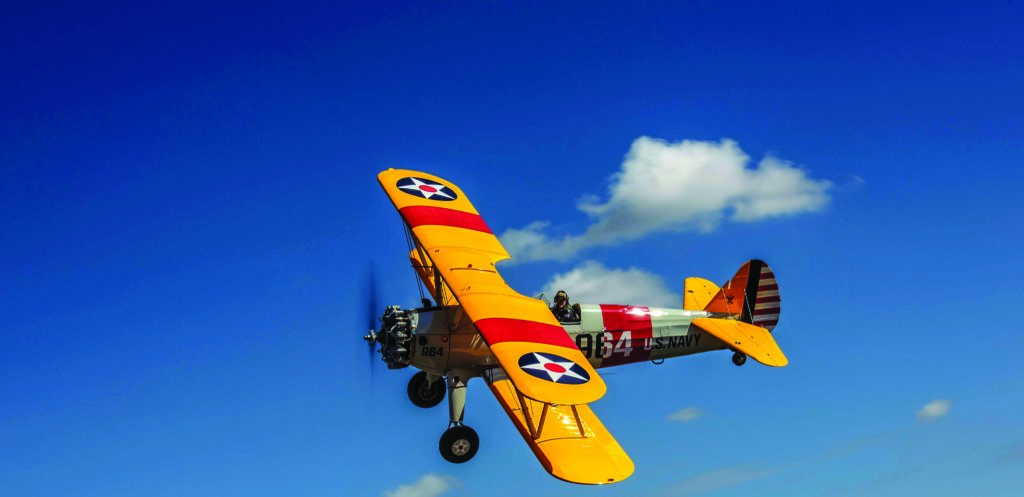Female Pilots Take to the Skies
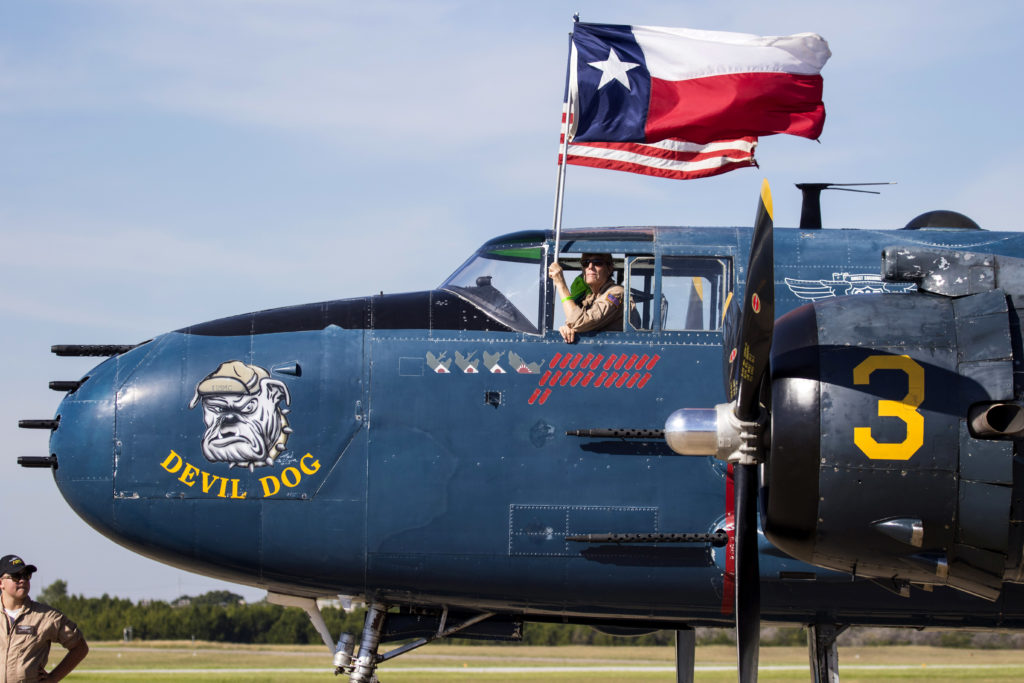
By Guest Blogger Lana Gates, Member – Arizona Commemorative Air Force Museum
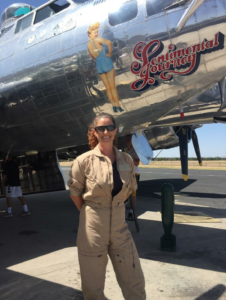 For Stephanie Meier, aviation is in her blood. Her grandfather flew in World War II, and her father worked as a pilot. At the age of 14, she decided she wanted to follow in their footsteps. Her dad had a heart-to-heart with her about the cyclical aviation industry that can prosper one day and tank the next. “You really have to love flying to make it work for you,” he told her. That advice only solidified her drive toward her chosen career.
For Stephanie Meier, aviation is in her blood. Her grandfather flew in World War II, and her father worked as a pilot. At the age of 14, she decided she wanted to follow in their footsteps. Her dad had a heart-to-heart with her about the cyclical aviation industry that can prosper one day and tank the next. “You really have to love flying to make it work for you,” he told her. That advice only solidified her drive toward her chosen career.
Today, Meier lives a life of adventure and is a role model to young girls. She epitomizes the truth that big dreams can become reality. Meier works full time as a co-pilot of a C-130 cargo plane used primarily for oil spill suppression. “If an oil rig springs a leak, we can get called to fly over it and spray dispersant on it,” she explains. The plane can transport 25,000 pounds of cargo and supplies. When not suppressing oil spills, Meier and her team fly civilian and military air drops, ranging from people to equipment. They also perform in occasional commercials and movies.
Working Toward a Dream
Although happy with her chosen career, Meier had a hunger that she couldn’t quench: to become a pilot of a C-47 Skytrain. This type of aircraft was used in World War II to transport paratroopers and supplies, and to rescue stranded soldiers from foreign countries. Meier’s grandfather flew one such plane over “the Hump,” the Himalayan Mountains from India to China, during the war, an extremely dangerous duty. Wanting a connection with him, Meier started volunteering at the Commemorative Air Force (CAF) Airbase Arizona, where she could at least be close to a C-47 until she could fulfill her dream to pilot it.
Meier started assisting the Old Number 30 C-47 flight crew chief with maintenance duties and mechanical tasks. Volunteer hours turned into training hours in the cockpit of CAF aircraft in her quest to become a qualified C-47 pilot. She hasn’t attained that yet, but in April, Meier checked out as the CAF’s only active female B-17 Flying Fortress co-pilot. This summer, she’ll serve as second in command on Sentimental Journey, one of only a dozen airworthy B-17s.
Meier joins nearly 250 pilots in the entire CAF organization who volunteer their time to fly the nonprofit’s fleet of 165 aircraft across the country for the education and enjoyment of the public. A handful of the pilots are females, including one in the Indiana Wing and four in Texas: two in the B-29/B-24 Squadron, one in the Devil Dog Squadron and one in the Highland Lakes Squadron. Three others have received transition letters from the CAF that permit them to put flight hours in and prepare for a check ride for a pilot rating. Those women are in the Houston Wing, the Invader Squadron in Texas and the Wisconsin Wing.
Opening Doors
CAF Pilot Sandy Travnicek has achieved Meier’s goal. Travnicek co-pilots a C-47 in addition to piloting an SNJ-4 at the Highland Lakes Squadron in Burnet, Texas, about 60 miles from Austin.
The thought of becoming a pilot never crossed Travnicek’s mind as a youngster. But at the age of 17, she took her father’s advice and applied to the U.S. Air Force Academy. Her success there opened all kinds of doors she didn’t know existed. “I never imagined I would have a career as a pilot,” she says. “I thought it would be a hobby.”
She and her husband are both pilots — commercially and with the CAF. She attributes her husband with encouraging her to join the organization, which was in need of pilots. Travnicek put in the requisite tail wheel flight hours until the organization felt she was sufficiently trained. She attended ground school and checked out on the SNJ in 2013. She’s flown that plane in formation at air shows. She checked out as a C-47 co-pilot on the squadron’s Bluebonnet Belle in December 2016. “It seemed like the right step to take,” she says.
The hardest part about becoming a pilot with the CAF for Travnicek was taking that first step and getting connected with a unit. But once she did, she found the people very welcoming. “There’s definitely a supportive culture in the units I’ve worked with,” she acknowledges. In addition to the Highland Lakes Squadron, she’s worked with the Central Texas Wing in San Marcos, between San Antonio and Austin.
Overcoming Naysayers
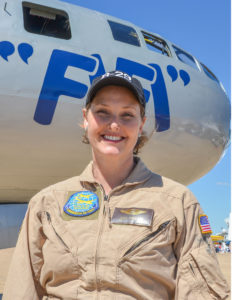 Pilot Debbie King agrees. Her favorite thing about the CAF is engaging with her fellow CAF members and keeping history alive. She co-pilots a B-24 Liberator named Diamond Lil and FIFI, one of only two airworthy B-29 Superfortresses.
Pilot Debbie King agrees. Her favorite thing about the CAF is engaging with her fellow CAF members and keeping history alive. She co-pilots a B-24 Liberator named Diamond Lil and FIFI, one of only two airworthy B-29 Superfortresses.
King has been hanging around the CAF B-29/B-24 Squadron in Dallas since 2000. After volunteering for a few years, she filled out the necessary paperwork to become a pilot and passed the Flight Evaluation Board review. She followed that with ground school. Along the way, she learned to disregard any naysayers concerned about her gender in a male-dominated field.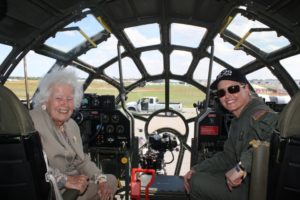
King keeps current with the required annual written and flight tests. She’s proven her qualifications and continues to play an active role in her squadron. “I jokingly say flying FIFI is like wrestling an elephant. You literally use both arms and legs to make the 29 do what you want. But I love her.”
When she’s not flying FIFI or the squadron’s B-24, King captains a Falcon 900 and serves as a flight instructor.
Following Her Passion
Beth Jenkins has a similar story, but she’s been engaged with the CAF longer. She first got involved in 1986 with the Yellow Rose Squadron, part of the Central Texas Wing in San Marcos. She pitched in where she could, saving any money she earned outside the CAF until she could finally afford her deposit to train in the cockpit of the unit’s B-25 WWII bomber, Yellow Rose.
Jenkins checked out as a co-pilot on Yellow Rose in 1996 and flew that for five months before transferring to the Devil Dog Squadron in Georgetown, Texas, north of Austin. There, she had to undergo more training, consisting of multiple hours of flying time before getting checked out as a co-pilot on Devil Dog, the squadron’s B-25 representation of a PBJ, which is the Marine Corps version.
After flying that for a while, Jenkins was asked to ferry the plane back from Midland, Texas, with Mike Burke as the pilot in command. Following that trip, Burke kept asking her to fly air shows with him, so she did.
Jenkins is a busy gal. When she’s not flying Devil Dog, she teaches at a flight school she owns, averaging 90 hours a month of instruction. But she makes time for the CAF because she has a passion for it. She’s even serving as the operations officer of her squadron. That passion drove her to become type rated in Devil Dog in 2007. Today, she continues to fly it as a pilot in command.
A couple of things keep Jenkins returning to the CAF: giving history lessons and getting to meet World War II veterans and hear their stories. “The CAF gives us a lot of opportunities we wouldn’t be able to have,” she says.
Shaping Pilots
Meier concurs. She thrives on keeping history alive with the old warbirds and helping spread the word to younger generations.
All of these women are role models to young girls. “I’m amazed at the number of people I see who are surprised there are women pilots after all this time,” Travnicek says. “I certainly wasn’t a pioneer,” she adds, giving a nod to the Women Airforce Service Pilots (WASP) who ferried planes during World War II.
“Ignore everyone else’s opinion about whether girls should be in the cockpit or not,” King urges. “Look forward to a whole lot of fun.”
The U.S. is facing a pilot shortage today and could use help — from both males and females. If you know anyone who may be interested in becoming a pilot, King suggests they study math and science.
“It doesn’t matter if you’re a boy or a girl, it takes work and dedication,” Meier adds. “If it’s something you want to do, go for it. You may run into some naysayers along the way, but just ignore them and use that as motivation to get what you want.”
Jenkins reminds youngsters they can do anything they put their minds to. She also recommends seeking scholarships to pay for flight school. “We need women and guys getting into it.” As for the CAF, she says, “If you’re just trying to get in some free flying time, it won’t work.”
The first thing you should do at the CAF, the women agree, is to volunteer. Get involved, pitch in where you can and get to know the other members. King recommends trying out different squadrons because “they each have a different personality,” she says. “Stick with it until a position is open or they are in need of help,” she adds.
“If you work hard and have a passion for it, I think you can get your foot in the door,” Jenkins encourages.
Meier sums, “If it was easy, everyone would be doing it. Don’t get discouraged.”
